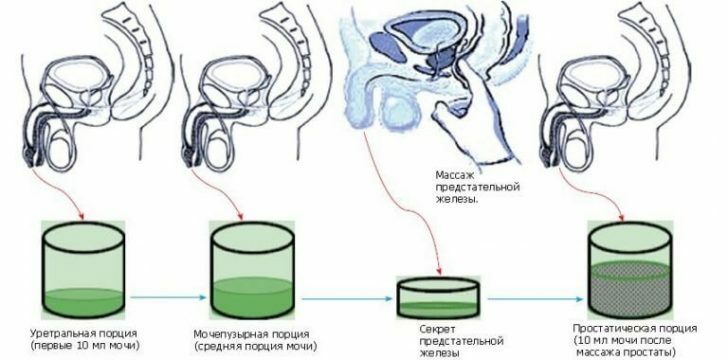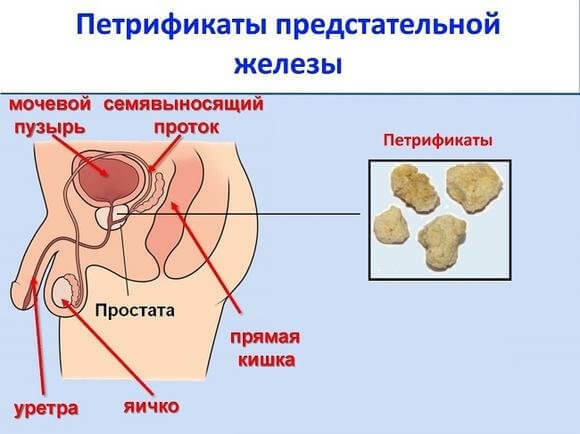What is the normal amount of sperm in ejaculation?
Ejaculate or otherwise semen is a mixture of seminal fluid and the prostate secretion. Consistency in semen is viscous, cloudy-whitish in color. Is allocated at the sexual certificate or actuation or intercourse or excitation of external genitals of the man.
Contents
- 1 Normal volume of ejaculate
- 2 Low amount of ejaculate
- 3 Large amount of ejaculate
- 4 Diagnosis
Normal volume of ejaculate
Volume of ejaculate, amount of spermatozoa and their mobility allow to determine a man's ability to fertilize female cells, that is, his fertility. The amount of sperm collected as a result of a single ejaculation is measured using a specially graded serological pipette. Normally, this indicator varies within from 2 to 10 ml of .
What determines the amount of sperm?
The volume of ejaculate is very individual and varies even for a single man. This parameter is affected both by the internal physiological characteristics of the man and by the surrounding causes. The following factors influence the sperm volume:
- male sexual activity;
- lifestyle;
- nature of food;
- presence of concomitant diseases of the urinary and reproductive systems;
- stress;
- age;
- hormonal background( see "Low testosterone in men - causes and effect").
There are a lot of other reasons, however, they are not so significant. Normally, the composition of the ejaculate is formed from two-thirds of the seminal fluid and a third of the secretion of the prostate gland.
Low amount of ejaculate
If the volume of the ejaculate is less than 2 ml , then the urologist andrologist diagnoses the oligospermia. Oligospermia is a pathological condition and occurs either with an increased effect of the above factors, or with pathologies associated with:
- abnormalities in the development of the organs of the male reproductive system;
- imbalance of sex steroid hormones( testosterone);
- inflammatory and infectious diseases - testiculitis, vesiculitis and prostatitis;
- trauma to the scrotum and testicles;
- use of drugs and alcohol.
In inflammatory and infectious diseases, in addition to reducing the volume, the activity of spermatozoa decreases, the percentage of spermatozoa that are not capable of normal fertilization increases. All these factors significantly affect male fertility and can lead to infertility. Oligospermia is also observed in adolescence, when the reproductive system is only being formed or if the sexual life is excessively active.
Large amount of ejaculate
A large amount of ejaculate can be a natural phenomenon in two cases:
- with prolonged abstinence( see "Sexual abstinence is good or harm?").Accumulated seminal fluid in large volume is determined in the ejaculate, and the percentage of young spermatozoa in the analysis of the spermogram is reduced;
- with increased hormonal activity. It can also lead to increased synthesis of spermatozoa, thereby increasing the volume of the ejaculate.
In the absence of the above reasons, a specialist must exclude the pathology associated with the presence of tumors in the reproductive system of a man. Malignant tumors in the tissues of the testicles or the prostate can lead to a significant increase in the number of spermatozoa in the seminal fluid or secretion of the prostate gland. In the spermogram, in this case, the modified unripe spermatozoa with reduced activity are determined, which, often, is the cause of infertility.
Diagnosis
To clarify the cause of the pathology of the volume of the ejaculate, andrologist or urologist, in addition to the interpretation of the spermogram, the following additional laboratory and instrumental studies:
- ultrasound-diagnosis of pelvic organs, it is possible to use TRUS for a more detailed study of the prostate gland. Ultrasound diagnostics allows revealing oncological diseases of the male reproductive system, as well as increasing regional lymph nodes, which gives data on the stage of the oncological process.
- Definition of oncologic markers in blood serum is an obligatory study in oncological processes.
- Determination of steroid sex hormones. The concentration of hormones helps in conducting differential diagnosis and allows you to exclude or confirm diseases associated with hormonal imbalance( see "How to determine the level of testosterone by external symptoms?").
- Biopsy. Precisely determines the nature of the tumor process.
In addition to laboratory and instrumental studies, a history of the disease is collected and the concomitant symptoms that can characterize a particular disease are specified. Consultation and examination are the first stage of the diagnostic study and allow you to establish a preliminary diagnosis.
Recommended for viewing:



